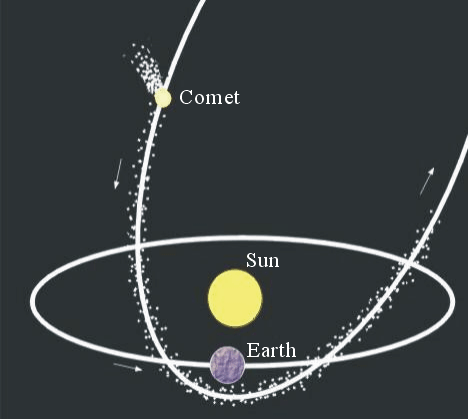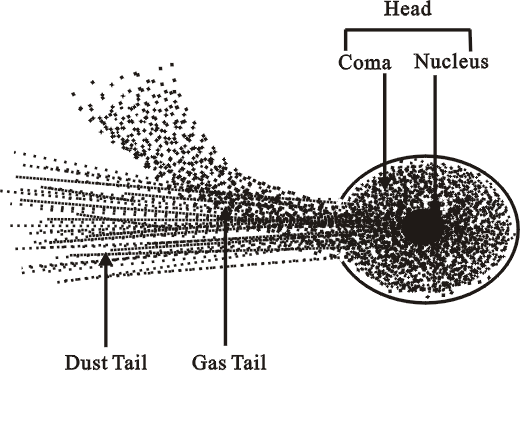What is a Comet?
What is a Comet?
A comet is a relatively small extraterrestrial body consisting of ice, dust, and gas. Comets are part of the Solar System. They move around the Sun in highly elliptical orbits (see Figure 1).

Figure 1 A comet moves around the sun in an elliptical orbit
Comets that return in less than 200 years are known as short-period comets. The famous Halley's comet has got a period of 76 years. It was observed many times in history and was last seen in 1986.
Some comets did not approach the Earth periodically and so could only be observed once. Periodic comets comprise only 4% of all known comets.
Structure of a Comet
A comet typically consists of a nucleus, coma, and tail (see Figure 2). The nucleus is embedded in the coma and they together form the head of a comet. The tail of a comet can be very long and bright, and is the most distinctive feature of a comet.

Figure 2 Structure of a comet
The nucleus of a comet is also known as the "dirty snowball" since it is primarily made up of ice with a small amount of dust. As a comet gets near the Sun, solar heat turns the ice in the nucleus into a gaseous haze that surrounds the nucleus and this becomes the coma. The tail of a comet usually consists of a straight gas tail and a curved dust tail. The lengths of comet tails can vary from very short ones to the rare few that cover a significant fraction of the sky.
Remark: Meteor and Meteor Shower